Mercedes V Class vs Renault Clio – Differences & prices compared
Compare performance, boot space, consumption and price in one view.
Find out now: which car is the better choice for you – Mercedes V Class or Renault Clio?
The Mercedes V Class (Bus) comes with a Diesel or Petrol engine and Automatic transmission. In comparison, the Renault Clio (Hatchback) features a Full Hybrid, Petrol or LPG engine with Automatic or Manuel transmission.
When it comes to boot capacity, the Mercedes V Class offers 1410 L, while the Renault Clio provides 391 L – depending on how much space you need. If you’re looking for more power, decide whether the 237 HP of the Mercedes V Class or the 143 HP of the Renault Clio suits your needs better.
In terms of consumption, the values are 7.10 L per 100 km for the Mercedes V Class, and 4.30 L for the Renault Clio.
Price-wise, the Mercedes V Class starts at 44900 £, while the Renault Clio is available from 16600 £. Compare all the details and find out which model fits your lifestyle best!
Mercedes V Class
The Mercedes-Benz V-Class exemplifies luxury and versatility in the world of multi-purpose vehicles. Its spacious interior is designed to accommodate both family adventures and executive travel with supreme comfort. With advanced technology and premium materials, the V-Class offers an unparalleled driving experience that seamlessly blends practicality with elegance.
details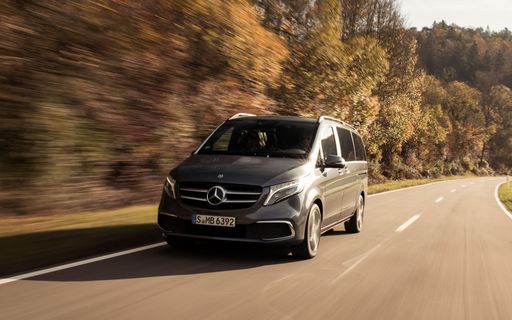 @ group-media.mercedes-benz.com
@ group-media.mercedes-benz.com
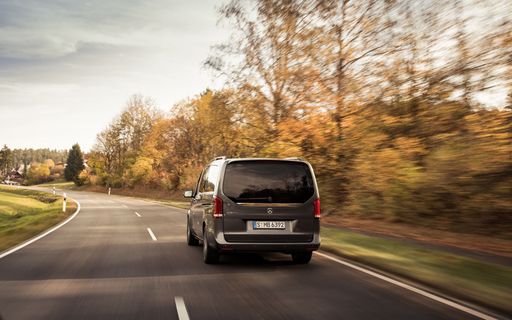 @ group-media.mercedes-benz.com
@ group-media.mercedes-benz.com
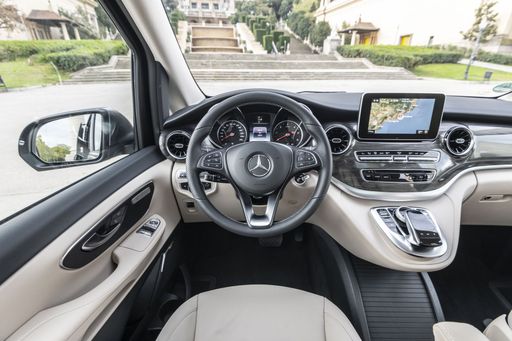 @ group-media.mercedes-benz.com
@ group-media.mercedes-benz.com
 @ group-media.mercedes-benz.com
@ group-media.mercedes-benz.com
Renault Clio
The Renault Clio continues to impress with its sleek design and agile handling, making it a standout choice in the compact car segment. Inside, it offers a surprisingly spacious and comfortable cabin, crafted with high-quality materials that enhance the driving experience. Its fuel efficiency and reliable performance make it an attractive option for both city commuting and longer journeys.
details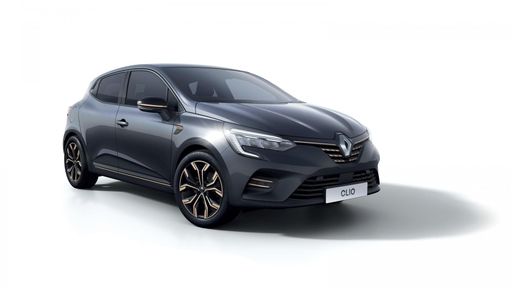 @ renault-presse.de
@ renault-presse.de
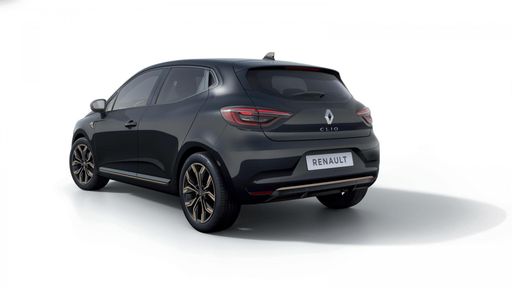 @ renault-presse.de
@ renault-presse.de
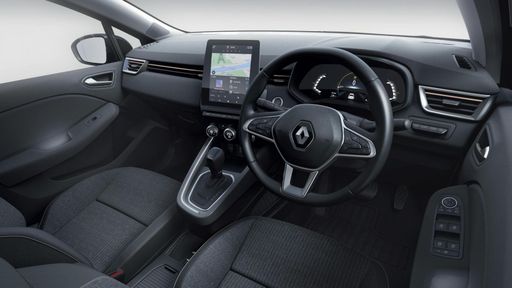 @ renault-presse.de
@ renault-presse.de

|

|
|
|
|
Costs and Consumption |
|
|---|---|
|
Price
44900 - 79500 £
|
Price
16600 - 23000 £
|
|
Consumption L/100km
7.1 - 10.2 L
|
Consumption L/100km
4.3 - 7 L
|
|
Consumption kWh/100km
-
|
Consumption kWh/100km
-
|
|
Electric Range
-
|
Electric Range
-
|
|
Battery Capacity
-
|
Battery Capacity
0.60 kWh
|
|
co2
185 - 232 g/km
|
co2
97 - 122 g/km
|
|
Fuel tank capacity
57 - 70 L
|
Fuel tank capacity
32 - 42 L
|
Dimensions and Body |
|
|---|---|
|
Body Type
Bus
|
Body Type
Hatchback
|
|
Seats
6
|
Seats
5
|
|
Doors
5
|
Doors
5
|
|
Curb weight
2192 - 2464 kg
|
Curb weight
1124 - 1331 kg
|
|
Trunk capacity
610 - 1410 L
|
Trunk capacity
301 - 391 L
|
|
Length
4895 - 5370 mm
|
Length
4053 mm
|
|
Width
1928 mm
|
Width
1798 mm
|
|
Height
1901 - 1908 mm
|
Height
1440 mm
|
|
Payload
636 - 908 kg
|
Payload
398 - 406 kg
|
Engine and Performance |
|
|---|---|
|
Engine Type
Diesel, Petrol
|
Engine Type
Full Hybrid, Petrol, LPG
|
|
Transmission
Automatic
|
Transmission
Automatic, Manuel
|
|
Transmission Detail
Automatic Gearbox
|
Transmission Detail
Automatic Gearbox, Manual Gearbox
|
|
Drive Type
Rear-Wheel Drive, All-Wheel Drive
|
Drive Type
Front-Wheel Drive
|
|
Power HP
163 - 237 HP
|
Power HP
67 - 143 HP
|
|
Acceleration 0-100km/h
7.4 - 10.7 s
|
Acceleration 0-100km/h
9.3 - 17.1 s
|
|
Max Speed
188 - 220 km/h
|
Max Speed
160 - 174 km/h
|
|
Torque
370 - 500 Nm
|
Torque
95 - 205 Nm
|
|
Number of Cylinders
4
|
Number of Cylinders
3 - 4
|
|
Power kW
120 - 174 kW
|
Power kW
49 - 105 kW
|
|
Engine capacity
1950 - 1999 cm3
|
Engine capacity
999 - 1598 cm3
|
General |
|
|---|---|
|
Model Year
2024
|
Model Year
2023 - 2025
|
|
CO2 Efficiency Class
G
|
CO2 Efficiency Class
C, D
|
|
Brand
Mercedes-Benz
|
Brand
Renault
|
Mercedes V Class
Introduction to the Mercedes-Benz V-Class
The Mercedes-Benz V-Class offers a unique blend of luxury, versatility, and cutting-edge technology, making it an appealing choice for families and businesses alike. With its spacious interior and a range of powerful engine options, the V-Class continues to set the standard in the MPV segment.
Impressive Design and Comfort
The exterior of the V-Class is characterised by its elegant lines and robust proportions, offering a commanding presence on the road. Inside, the emphasis is on luxury and comfort. With seating for up to six passengers, passengers can enjoy ample legroom and high-quality materials throughout the cabin.
Engine Options and Performance
The V-Class is available with a variety of engine configurations, including diesel and petrol options. The power output ranges from 163 PS to an impressive 237 PS, depending on the variant chosen. The diesel engines, known for their efficiency, offer an attractive balance between performance and fuel economy, with consumption figures ranging from 7.1 to 8 L/100km.
Innovative Technology and Features
Mercedes-Benz is renowned for integrating advanced technology in its vehicles, and the V-Class is no exception. It features the latest MBUX (Mercedes-Benz User Experience) infotainment system, which includes voice control, navigation, and smartphone connectivity. Safety is also a priority, with features such as Active Brake Assist, Attention Assist, and Crosswind Assist.
Driving Dynamics and Versatility
The V-Class offers both rear-wheel and all-wheel-drive configurations, ensuring it can tackle various driving conditions with ease. The 9G-TRONIC automatic transmission contributes to a smooth and dynamic driving experience, while the ample luggage space of up to 1410 litres ensures practicality for both personal and commercial use.
Conclusion: A Leader in Luxury MPVs
With its combination of luxurious comfort, powerful engines, and state-of-the-art technology, the Mercedes-Benz V-Class stands out as a leader in the luxury MPV market. Whether you're looking for a family vehicle or need a reliable business transport solution, the V-Class offers the versatility and sophistication required for modern life.
Renault Clio
Introduction to the Renault Clio
The Renault Clio, a popular choice among compact cars, has continually advanced its design and technology to maintain a strong position in the automotive market. With enhancements in engineering, efficiency, and aesthetic appeal, the Clio remains a top contender in the hatchback category.
Advanced Hybrid Technology
The Renault Clio's hybrid technology is one of its standout features. The E-Tech Hybrid system optimises both performance and efficiency, offering a seamless transition between electric and fuel-powered driving. This setup results in an impressive fuel consumption rate of 4.3 L/100km, making it an attractive option for eco-conscious drivers.
Efficient Engine Options
Renault offers a variety of engine choices for the Clio, accommodating different driving styles and preferences. From the economical SCe 65 manual variant to the powerful TCe 100 LPG gas version, each option is engineered to balance performance with fuel efficiency. With outputs ranging from 67 to 143 PS, drivers can enjoy a tailored driving experience.
Design and Comfort
The Renault Clio stands out with its sleek and modern design, characterized by its hatchback body style. The interior boasts an ergonomic layout with seating for five, ensuring passenger comfort and convenience. With a boot capacity of 301 to 391 litres, the Clio also offers practical storage solutions for everyday use.
Safety and Innovation
Safety is a key priority for Renault, and the Clio reflects this commitment with its suite of innovative safety features. Advanced driver-assistance systems are integrated throughout, enhancing both safety and usability. The Clio encompasses features like lane departure warning, automatic emergency braking, and adaptive cruise control.
Cost Efficiency and Environmental Impact
The Renault Clio not only offers affordability with pricing ranging from €18,450 to €26,800, but also promises low running costs. With CO2 emissions between 97 and 130 g/km, the Clio fits well within the C and D efficiency classes. This makes it a cost-effective and environmentally friendly choice for modern drivers.
Conclusion
Renault Clio remains a dynamic, dependable and economical option in the compact car segment. With its innovative technologies, diverse engine options, and commitment to safety and design, the Clio continues to impress and adapt to the evolving demands of the automotive world.
The prices and data displayed are estimates based on German list prices and may vary by country. This information is not legally binding.
